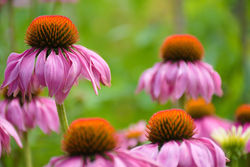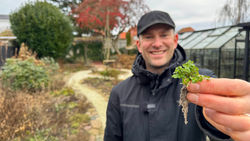7 ways to use your old Christmas tree in the garden
- Lars Wildes
- Jan 5, 2023
- 4 min read
The presents are gone. The star is hanging on for dear life. And pine needles are everywhere.
It’s officially the end of Christmas.
So what do you do with your tree now that the holiday has ended?
Here are seven of my favorite ways to recycle, repurpose or dispose of your gorgeously decorated Christmas tree. (Just be sure you remove the baubles, lights, and ornaments first.)

1. Use it around acid-loving plants
Cut the branches of your Christmas tree into small pieces using shears and spread them around your hydrangeas and rhododendrons.
The branches and needles will break down over time and help to improve the acidic soil that these plants need to grow.
This works for a variety of popular plants such as azaleas, rhododendrons, blueberries, strawberries, and heathers. These are all acid-loving, meaning they need a soil pH of about 5.5.

Putting pine needles around hydrangeas is a great way to change the color of your flowers. For hydrangeas, the acidity of the degrading pine needles and branches around the plant will turn the flowers blue… or pink if the pH is higher.
Recycling your Christmas tree like this helps you save money on buying and bringing in sphagnum soil (peat moss soil), too. Plus, harvesting peat moss contributes to crazy amounts of greenhouse gas emissions. When you stop buying it, you’re giving the planet a fighting chance.
2. Use it as mulch
Christmas may be over, but the cold weather is only just beginning.
Lay the pine branches around your perennials and delicate plants to protect them from hard frost. This works great for flower beds, containers, hanging baskets, and window boxes.
3. Use it to create homes for your garden’s permanent residents
If your garden is big enough, lay larger branches in the corners and around empty areas to provide hiding places for insects, mice, or even hedgehogs.
These little visitors are a part of your garden’s ecosystem and deserve refuge this winter.
4. Use it for outdoor fun
This is something we do every year with old Christmas trees at the kindergarten where I work.
Ask your neighbors for their real trees and then use them to create a ‘cave’ for your children to play in. It’s hours of fun for kids and it gets them outside. A win-win.
It’s as simple as leaning several trees together in a tipi shape.
While the Christmas trees still have their green needles on them, your kids will love the feeling of being in the ‘tent’. When the needles start to fall, the skeleton-like structure takes on a new story and the adventure continues.
5. Donate it to local schools
Speaking of schools, if you don’t have space to build a Christmas tree tipi in your backyard, contact your child's school and ask if they can use your old tree.
They can use them as dens, construction activites, and more. I know my kindergarten would say yes!
6. Use it to feed the birds
Once the needles have fallen off of your Christmas tree (or after you remove them to lay around your acid-loving perennials), use the skeleton to hang homemade bird food balls on.
The branches give local birds a chance to sit and hide while they eat. Think of it as a bird diner right in your garden.
7. Use it for hygge
You know a Dane can’t talk about Christmas, trees, and gardening without mentioning ‘hygge’.
What you end up not using in your garden, use for firewood and enjoy hygge (coziness) with your family over hot chocolate and roasted marshmallows.
Is it better to buy a real Christmas tree or a fake one?
Whether to buy a real Christmas tree or an artificial one is a question I hear every holiday season.
It does seem that artificial Christmas trees are the safer option. Why? Because you’re allowing real pine trees to live where they belong, in the forest. And artificial trees can be used year after year.
While that is true. It’s also true that most real Christmas trees are grown on farms for the specific purpose of being harvested as Christmas trees.
These real Christmas trees are also replanted every year — making it a sustainable business. Very few Christmas trees are actually removed from forests.
Real Christmas trees are more sustainable than fake, plastic trees because they’re biodegradable. Plastic trees fill landfills and can take 500+ years to decompose, causing more harm than good to the environment. (And you can’t do any of the ideas above with a fake Christmas tree.)
At the end of the day, it’s up to you. If you do choose an artificial tree this Christmas, promise yourself that you’ll keep it for more than one holiday. Spend the time to get one that you’ll enjoy looking at for many Decembers to come.

Can you recycle an artificial Christmas tree?
Typically no. You can not recycle an artificial Christmas tree.
While live Christmas trees can be easily recycled and reused in a million different ways, fake Christmas trees are usually made with PVC (polyvinyl chloride) and decorative fibers that are glued or fixed to metal frames. This material isn't recyclable and takes 500+ years to break down in a landfill.
Some artificial Christmas tree manufacturers and recycling programs can process artificial trees and other decorations into reusable materials. Check your area for services like that.
What do you do with your old Christmas tree? Share your ideas in the comments below.






Comentarios